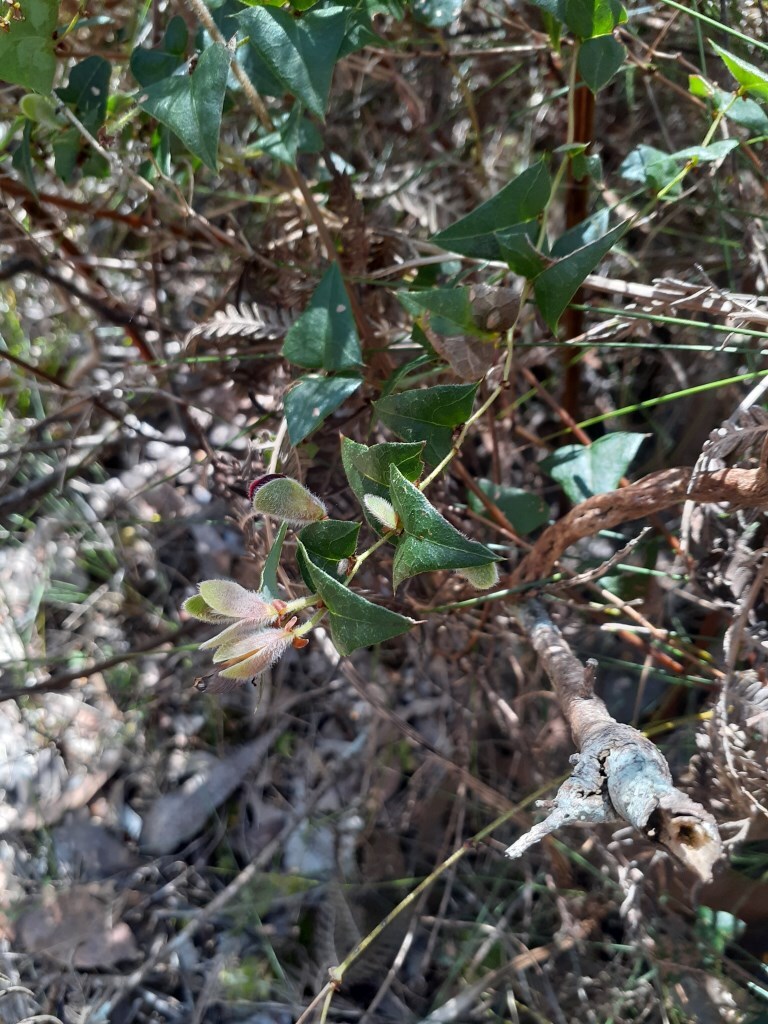Platylobium triangulare
R.Br. Ivy Flat-peaProstrate or ascending shrub; stems glabrous to densely pubescent. Leaves opposite, sessile or subsessile, broadly triangular or cordate-hastate, 1–3.2 cm long, 0.6–2.6 cm wide; apex and lateral lobes pungent, or the lateral lobes on some lower leaves rounded. Flowers 1(–3) per axil; pedicels villous, 0.6–1.8 cm long, exserted from basal bracts and scales; bracteoles usually reflexed; calyx with dense appressed or spreading hairs throughout, upper lobes 9.5–12.5 mm long (including tube), lower lobes 4.5–6.5 mm long; ovary glabrous apart from long white hairs on margins. Pod with wing to 4 mm wide beyond the upper sutural nerve, with scattered hairs on the margins but otherwise glabrous. Flowers Sep.–Nov.
GleP, Brid, VVP, GipP, OtP, WaP, CVU, GGr, DunT, WPro. Also Tas. Occurs mostly in open sclerophyll woodland and heathland.
Platylobium triangulare has a curious disjunct distribution, at Wilsons Promontory in the east and in the south-west as far west as the Glenelg River. See notes under P. obtusangulum.
Ross, J.H. (1996). Platylobium. In: Walsh, N.G.; Entwisle, T.J., Flora of Victoria Vol. 3, Dicotyledons Winteraceae to Myrtaceae, pp. 816–819. Inkata Press, Melbourne.
 Spinning
Spinning